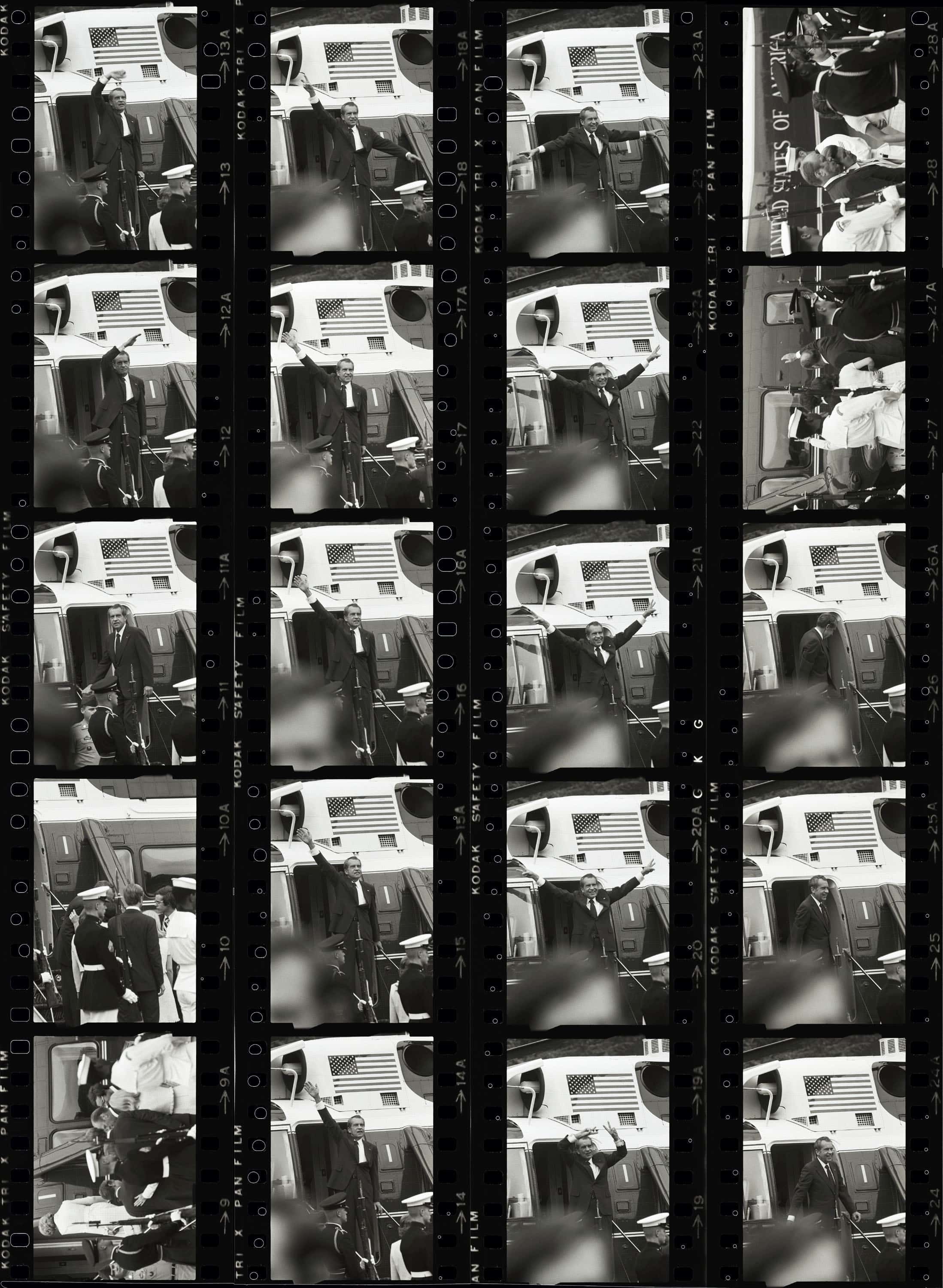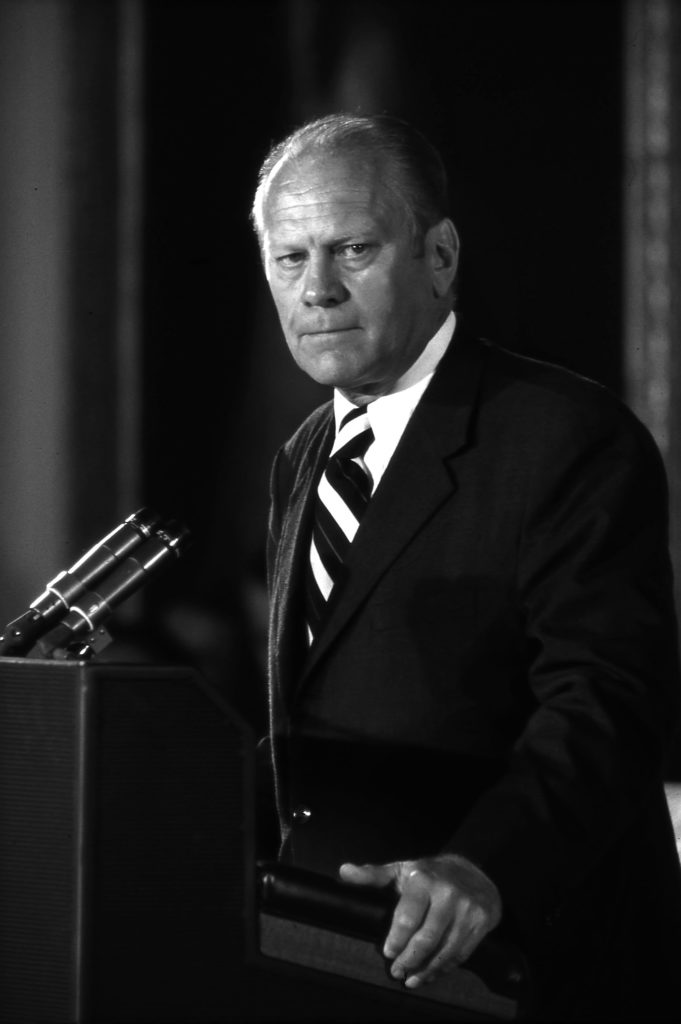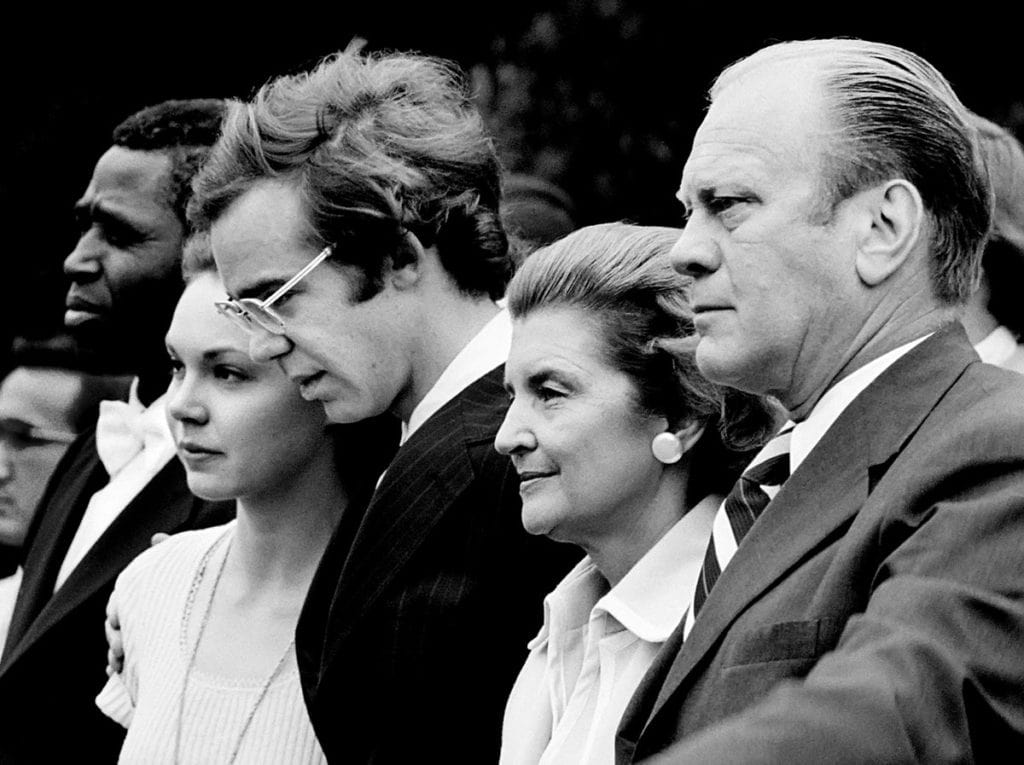I remember August 9, 1974 less as the day President Richard Nixon left the presidency, but as the day Gerald R. Ford assumed it.
The morning started on the South Lawn of the White House where I was assigned by TIME Magazine to photograph one of the most dramatic events in U.S. history. This was the first time any U.S. president had resigned, and the national was reeling. From the moment Nixon stepped onto the first step of his helicopter, glanced up for the last time at the Truman Balcony, waved his arms with the familiar “V” sign, then disappeared inside Marine One, only ten seconds had elapsed. I caught every one of them. As the film ratcheted through my camera I only had one thought on my mind, “I can’t believe what I’m seeing, and I don’t want to miss a moment of the spectacle.” I didn’t. In fact with my motor drive cranking I freeze-framed 17 exposures of the historic scene.

As Nixon’s helicopter lifted off I trained my lens on Vice President and Mrs. Ford. They stood next to David and Julie Eisenhower, Nixon’s daughter and son-in- law as they watched him recede into the distance. A White House butler completed the tableau.

A short time later, at high noon in the East Room of the White House, Gerald R. Ford was sworn as the 38 th President of the United States by the Chief Justice of the Supreme Court. President Ford then declared our long national nightmare over. I caught that moment. He looked not only grim, but also resolved to deal with what lay ahead.
That evening I was invited to the Ford’s modest home in Alexandria. After the other guests left the president wanted to talk to me about becoming his chief White House photographer. The next day I became the third civilian to ever have that job.
